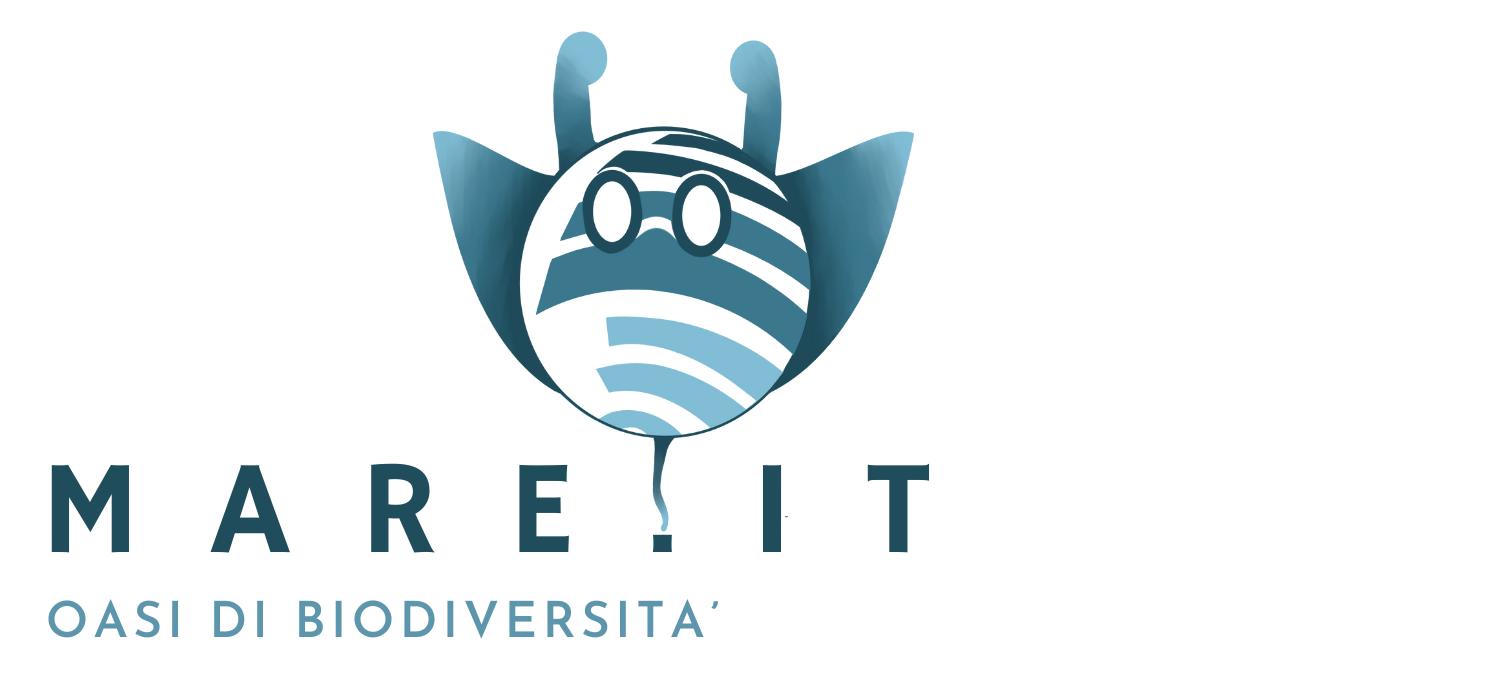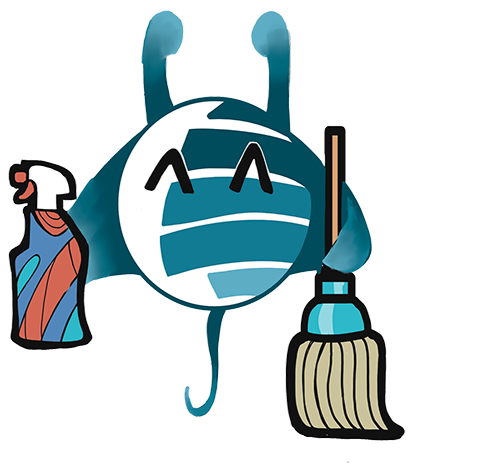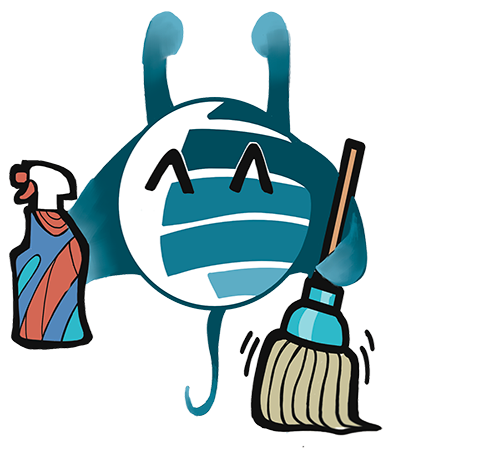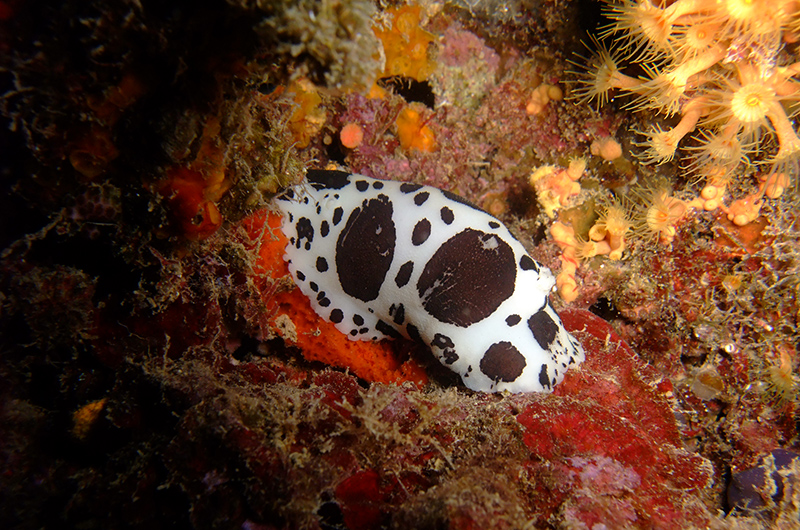Very delicate ribbons, arranged in a spiral, form transparent yellowish-white skeins that stand out on the dark rock, in sheltered and shady spots. They are deposited on the seabed by an animal with an unmistakable mantle, which also stands out among all the other creatures present in the marine environment. Flat, oval in shape, a milk-coloured body crawls slowly with numerous brown spots of various shapes and sizes, outlined by a darker edge. The common name by which this strange specimen is known, Sea Cow (Peltodoris atromaculata), is not surprising. A gastropod mollusc of the order Nudibranchs, completely without a shell, classified in the suborder Doridina because of the sensory appendages it displays on its head, called rhinophores, white and retractable. Another peculiarity is the gills, between six and nine and also retractable, which appear as a whitish tuft, located on the rear part of the body.
Those ribbons left on the bottom contain the eggs of the sea cow: very small, white or yellow in color, they are laid in various stages, during the summer period by the adults, who are hermaphrodites, both male and female at the same time. From the eggs, larvae are born, equipped with a tiny shell, which become part of the plankton, until, having escaped the many predators, they reach the right size to return to the bottom and begin life as adults, now without their shell.
On average, between five and seven centimeters long, the cows, also known as Dotted Sea Slug, can reach twelve centimeters. As they grow, the size of their spots also increases in proportion, and their shape is a characteristic element of each individual. During the egg-laying phase, which lasts for several days, the animal loses weight and becomes smaller. This, after all, is the culminating moment of its life cycle, which lasts a year and ends just a few weeks after reproduction.
Widespread throughout the Mediterranean, the Sea Cow lives between 5 and 50 meters deep, mainly on coralligenous and rocky substrates, but also in Posidonia meadows. Wherever its prey, which are sponges, are found. In fact, it spends most of its life on them, scraping their porous surface with its designated organ, the radula. The nudibranch is fond of only two species of sponges, Petrosia ficiformis and Haliclona fulva.




